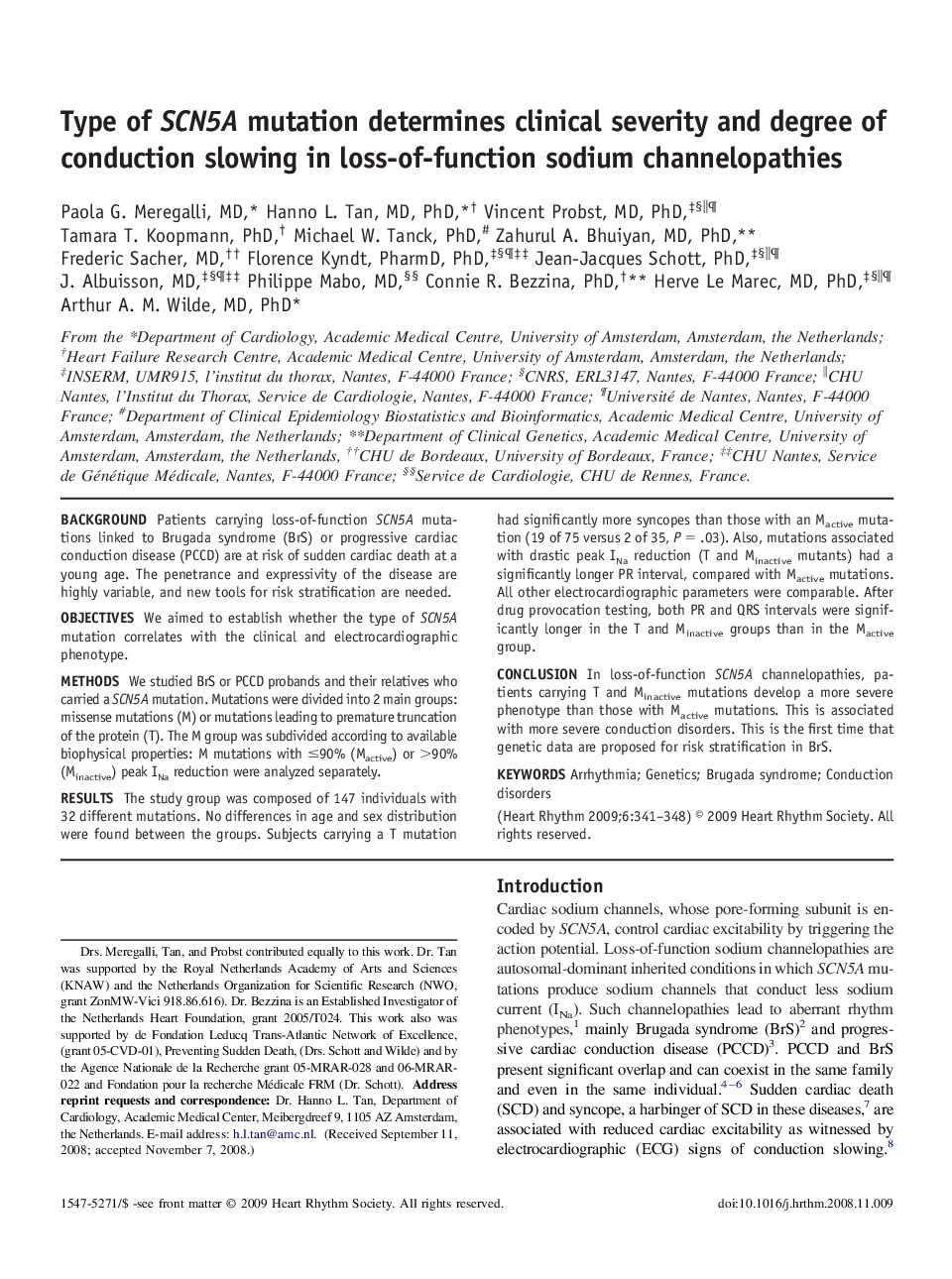| Article ID | Journal | Published Year | Pages | File Type |
|---|---|---|---|---|
| 2924472 | Heart Rhythm | 2009 | 8 Pages |
BackgroundPatients carrying loss-of-function SCN5A mutations linked to Brugada syndrome (BrS) or progressive cardiac conduction disease (PCCD) are at risk of sudden cardiac death at a young age. The penetrance and expressivity of the disease are highly variable, and new tools for risk stratification are needed.ObjectivesWe aimed to establish whether the type of SCN5A mutation correlates with the clinical and electrocardiographic phenotype.MethodsWe studied BrS or PCCD probands and their relatives who carried a SCN5A mutation. Mutations were divided into 2 main groups: missense mutations (M) or mutations leading to premature truncation of the protein (T). The M group was subdivided according to available biophysical properties: M mutations with ≤90% (Mactive) or >90% (Minactive) peak INa reduction were analyzed separately.ResultsThe study group was composed of 147 individuals with 32 different mutations. No differences in age and sex distribution were found between the groups. Subjects carrying a T mutation had significantly more syncopes than those with an Mactive mutation (19 of 75 versus 2 of 35, P = .03). Also, mutations associated with drastic peak INa reduction (T and Minactive mutants) had a significantly longer PR interval, compared with Mactive mutations. All other electrocardiographic parameters were comparable. After drug provocation testing, both PR and QRS intervals were significantly longer in the T and Minactive groups than in the Mactive group.ConclusionIn loss-of-function SCN5A channelopathies, patients carrying T and Minactive mutations develop a more severe phenotype than those with Mactive mutations. This is associated with more severe conduction disorders. This is the first time that genetic data are proposed for risk stratification in BrS.
